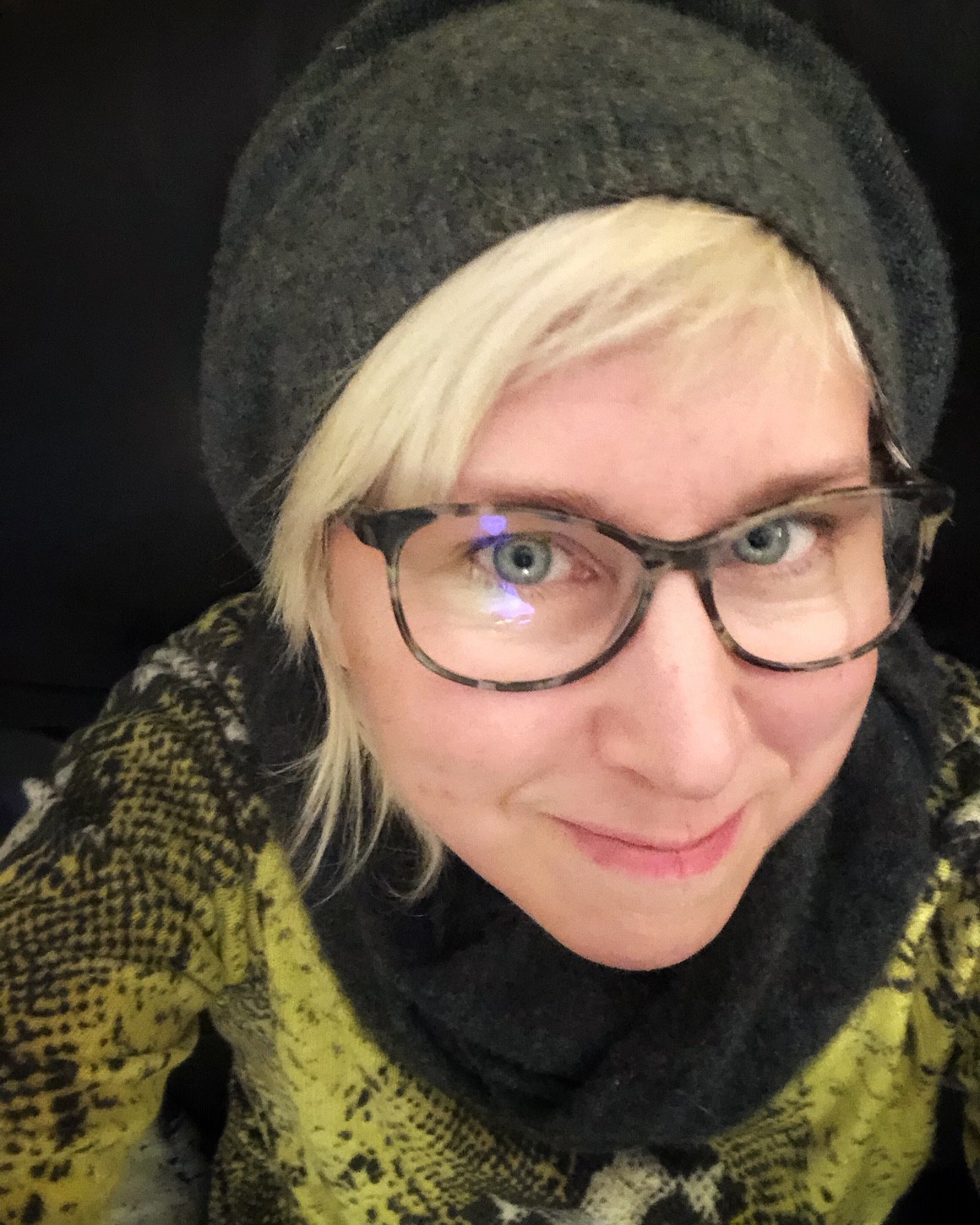Alright – so today we’ve got the honor of introducing you to Amy Ahlstrom. We think you’ll enjoy our conversation, we’ve shared it below.
Amy, thanks for joining us, excited to have you contributing your stories and insights. Let’s start with the decision of whether to donate a percentage of sales to an organization or cause – we’d love to hear the backstory of how you thought through this.
For years, I had a “ten percent rule”: every time I sold a piece of art, I would take a minimum of ten percent of that sale and put it towards buying art from another local artist. I strongly believe in supporting my local art community, and that includes buying art. I was able to do this because I had a second full-time job in addition to my art career. I also donated art to lots of non-profit auctions. More recently, with the additional support of my partner, I have a “twenty percent rule” in which I donate twenty percent of my art sales proceeds to local arts organizations and to causes that I support. I also do “pop-up” small fundraisers on Instagram and Facebook; I will make a few smaller pieces and offer them for sale, then donate 100% of the proceeds. I’m very grateful for the opportunity to give back to the community that has nurtured me and so many other local artists. Artists are the most generous people I know; whether it is their time, expertise or money, they give back often and create a sort of positive feedback loop that makes being a member of the arts community especially rewarding.


As always, we appreciate you sharing your insights and we’ve got a few more questions for you, but before we get to all of that can you take a minute to introduce yourself and give our readers some of your back background and context?
Hello! I’m Amy Ahlstrom, and I create modern, conceptual quilts made of silk and cotton. I started sewing as a child; both my mother and grandmother sewed as well. I began quilting at age twenty-one. My pop-art style is influenced by my experience with silkscreening and my background as a graphic designer and comic book illustrator. The common thread in my quilts is often text; I use words both to convey meaning and as visual elements. I began developing my current style of appliquéd quilting in 2005; I design my quilts digitally, make paper patterns, then hand-cut fabric images. I quilt using hand-guided machine quilting, in which the quilt is moved under the needle to create intricate patterns. I earned my BFA in Fiber Arts from Northern Illinois University, and an MFA in Fiber from the School of the Art Institute of Chicago. I also hold an MA in Special Education from San Francisco State University.
My quilts have been exhibited at the DeYoung Museum, the San Jose Museum of Quilts and Textiles, Mirus Gallery, 111 Minna, Modern Eden Gallery, Sylvia White Gallery, and Root Division. I was honored to be the first artist chosen for the San Jose Museum of Quilts and Textiles Artist In Residency (AIR) program, and thrilled to be included in the very first DeYoung Open. I exhibit my work often in the San Francisco Bay Area; follow me on Instagram @amy_ahlstrom for more information, or visit my website at amyahlstrom.com to see more of my work.



Have you ever had to pivot?
The most influential pivot of my life was changing my major in college. I did a lot of anatomical drawings of animal skulls in high school, and had been accepted into a prestigious medical illustration program. Unfortunately, I couldn’t afford to go, so I decided to pursue a fine arts degree at a more affordable college in-state. Initially, I studied painting, but it wasn’t a good fit. I took a lot of other studio art classes; ceramics, sculpture, jewelry… and ended up finding my way to an Intro to Fiber Arts class. I had started sewing and drawing concurrently at age five, so I figured that I could still make the images I wanted, but on fabric. I discovered screen printing and appliqué, and used these skills to create quilt designs about anatomy and the body. I’ve pivoted a few times since then, but what I have learned is that education and creative experimentation are always worth it because they positively influence your work, directly or indirectly. I bring all of my past experience to my current work.
What’s been the best source of new clients for you?
Instagram; every time I post images, I reach new viewers and potential clients. Over the past two years, I have created and sold a lot of small quilts on Instagram in order to fundraise for a variety of arts, mental health, LGBTQIA+ and reproductive rights organizations whose missions I support. Although the main objective has always been to use my artistic skills to raise money and to amplify the work of the organization, these mini-fundraisers have introduced my work to a variety of new audiences.
Contact Info:
- Website: http://www.amyahlstrom.com
- Instagram: https://www.instagram.com/amy_ahlstrom/
Image Credits
Self-portrait(s): Amy Ahlstrom. All others: Dana Davis


